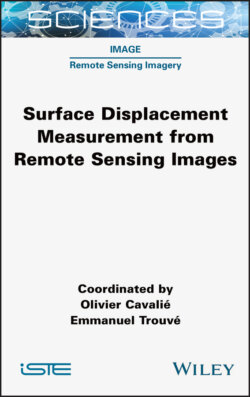Читать книгу Surface Displacement Measurement from Remote Sensing Images - Olivier Cavalie - Страница 18
1.2.2. Canadian C-band satellites: Radarsat-1, Radarsat-2 and RCM
ОглавлениеRadarsat-1 was the first imaging radar developed for the Canadian Space Agency (CSA). It was launched in December 1995 and ended its operations in April 2013. The satellite had noticeable activity over the Arctic areas for ice monitoring. In the late 1990s, it was the only civilian radar capable of imaging part of the Earth, while ERS could only operate in the visibility of ground receiving stations due to the lack of onboard recording. The satellite offered a variety of imaging modes, including the large swath in ScanSAR (510 km) and narrow ScanSAR (305 km), seven stripmaps (100 km) and three others with 150 km swath, ranging from 20 to 47°, as well as 15 fine modes at incidences above 37° (45 km). The radar operated only in single co-polarization HH. The satellite native design was right-looking imaging, but the CSA conducted a dedicated campaign over Antarctica with a 180° rotation of the spacecraft, making it left-looking, and the first radar mosaic of the continent could thus be produced. Interferometry was demonstrated during the mission, although there were some strong limitations with this spacecraft. Radargrammetry for DEM was also demonstrated, prior to the SRTM mission.
There were several limitations of the mission with regard to interferometry:
– the satellite was not yaw-steered, meaning the Doppler centroid had strong values, exceeding several PRFs, as well as strong variations in the year, and for interferometry, we should take care when combining pairs, the minimum and maximum of Doppler shift being around the solstices;
– the orbit-keeping was quite loose, and baselines reached several kilometers;
– orbital knowledge was a special issue in computing correct interferograms, and the use of fine orbit interpolators, such as Hermite polynomials, was a necessity.
The Radarsat-2 spacecraft was launched in December 2007 while Radarsat-1 was still operating. The spacecraft added significant improvements in many areas: right-and left-looking, quad polarization, low σ0, ultrafine modes, ground track maintained within a 500 m wide range, yaw steering and onboard state recorders. Although on the same reference orbit as Radarsat-1, Radarsat-2 images were not pairable with Radarsat-1 for interferometry: the central frequency was shifted from 5.3 to 5.405 GHz and the Doppler centroid was not compatible, due to the difference in yaw steering. At the end of 2020, the spacecraft was still operating, making a transition to the next Canadian SAR mission.
The Radarsat Constellation Mission (RCM) aims to replace the Radarsat-2 mission, continuing the traditional Canadian C-band SAR imagery as well as adding automatic identification system (AIS) payloads to improve maritime surveillance. It is composed of three identical satellites that were launched together in June 2019 for an expected lifetime of seven years. The sun-synchronous constellation has a 18:00 ascending node and flies at an altitude range between 586 and 615 km. As the three satellites are equally spaced along the orbit, the repeat time is only four days, and the orbit is maintained within a 120 m radius orbital tube, which gives good advantages for several InSAR applications. Various schemes of polarization are implemented: single polarization, dual co-cross or compact polarimetry are available on all modes; dual HH–VV is available for specific modes, as well as a quad-polarization mode. Radar modes are numerous, from spotlight (1×3 m resolution, one look) to wide ScanSAR (100 m, eight looks)
Data access: Since April 2019, 36,000 images of archive data acquired by the Government of Canada all over the world have been freely available (see CSA 2019). Unfortunately, not all acquired data can be accessed at the time of editing (2021).
